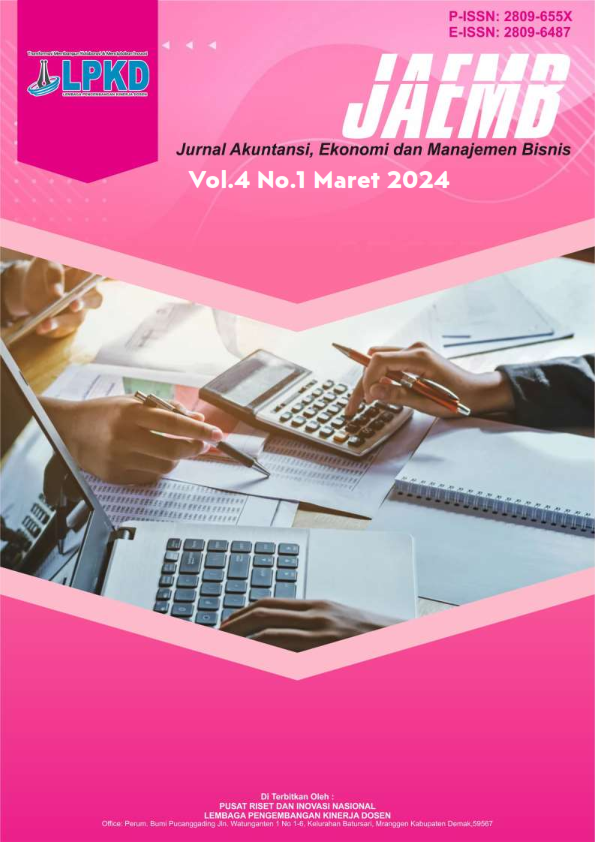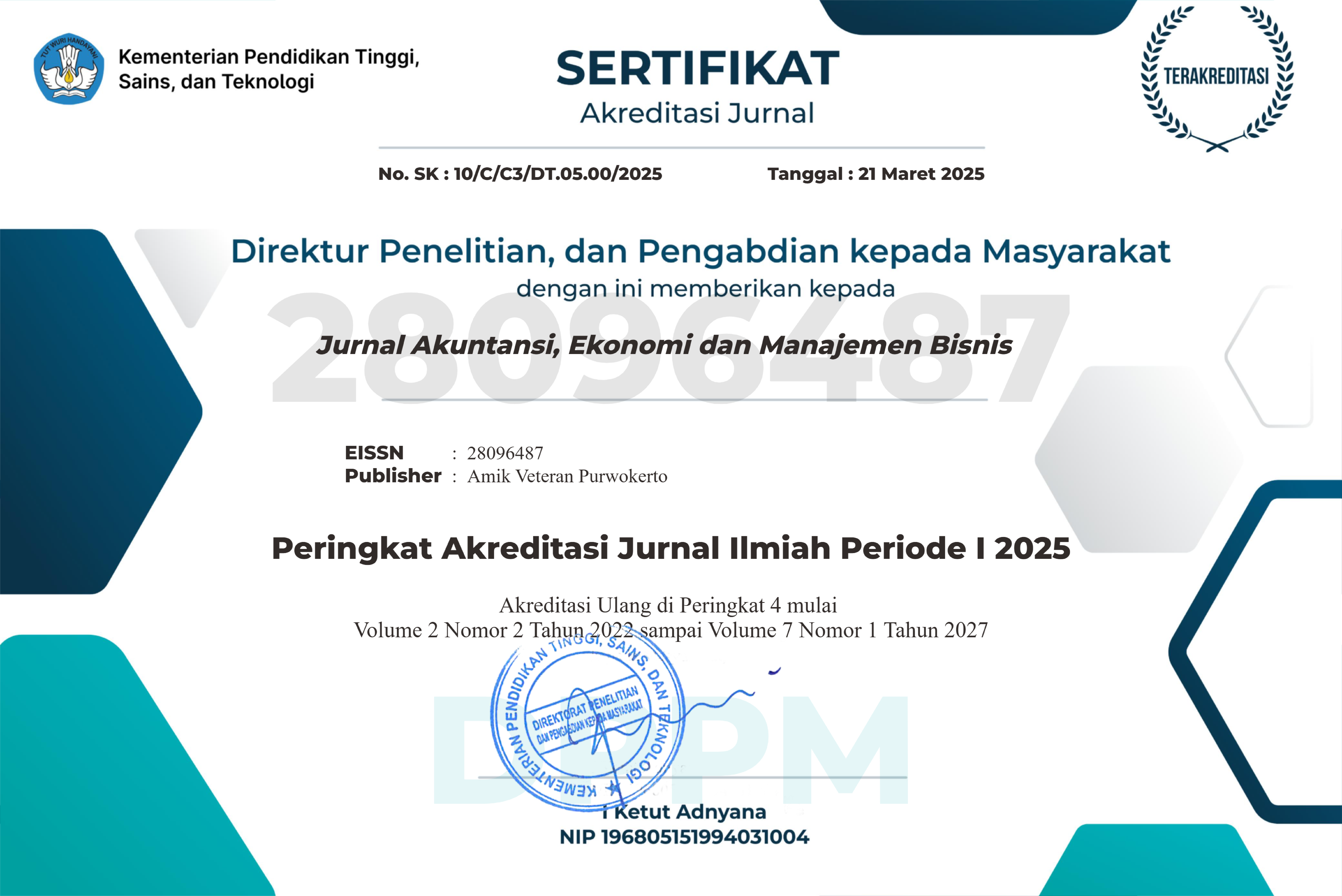ANALISIS BIBLIOMETRIK TREN PENELITIAN PADA PENERAPAN PAJAK KARBON MENGGUNAKAN VOSVIEWER
DOI:
https://doi.org/10.55606/jaemb.v5i1.6091Keywords:
Bibliometric Analysis, Carbon Emission, Carbon Tax, Carbon Trading, VOSviewerAbstract
This study aims to describe the trend of research on carbon tax, focusing on article identification including the year of publication, the countries that produce the most articles, the articles with the most citations and related topics. This study uses bibliometric analysis with VOSviewer software based on Scopus data, covering 206 articles published from 2015-2025. Data was collected using the keyword “Carbon Tax” to be analyzed for identification. The results found that the number of publications on carbon tax fluctuated each year, with 2024 being the most published year with 37 articles. China and the United States lead in the number of articles and citations, followed by India and other countries. The article "Retailer-driven carbon emission abatement with consumer environmental awareness and carbon tax: Revenue-sharing versus Cost-sharing" was the most cited with 359 citations. Research trends on carbon taxes focus on emissions control and the environment, emissions trading and public policy, economic analysis and computational modeling, sustainability policy and supply chains and environmentally sustainable renewable energy. The pattern of research conducted by researchers shows that research on carbon tax now focuses on carbon emission trading, energy supply chain, transition to renewable energy as well as more technical aspects such as carbon accounting, sensitivity analysis and energy utilization in achieving net zero emission
References
[1] X. Hu, Z. Yang, J. Sun, and Y. Zhang, “Exempting battery electric vehicles from traffic restrictions: Impacts on market and environment under Pigovian taxation,” Transp Res Part A Policy Pract, vol. 154, pp. 53–91, Dec. 2021, doi: 10.1016/j.tra.2021.09.014.
[2] I. Susanto and R. Ulpa, “Analisis Kesiapan Implementasi Pajak Karbon di Indonesia,” 2023. [Online]. Available: http://ojs.stiami.ac.id
[3] K. D. Meila, A. Dianty, and L. Veronica, “Penerapan Pajak Karbon dalam Mewujudkan Sustainability Development Goals Serta Dampaknya Terhadap Penerimaan Pajak di Indonesia,” Owner, vol. 8, no. 2, pp. 1849–1864, Mar. 2024, doi: 10.33395/owner.v8i2.2001.
[4] L. Panza and M. Peron, “The role of carbon tax in the transition from a linear economy to a circular economy business model in manufacturing,” J Clean Prod, vol. 492, p. 144873, Feb. 2025, doi: 10.1016/j.jclepro.2025.144873.
[5] S. Park, H. Mun, J. Park, and I. Lee, “Cost optimization methodology based on carbon-techno-economic analysis: An application to post-combustion carbon capture process,” J Clean Prod, vol. 434, p. 139887, Jan. 2024, doi: 10.1016/j.jclepro.2023.139887.
[6] M. Wimala and J. Yeremy, “Potensi Penerapan Kebijakan Carbon Tax Pada Industri Konstruksi Indonesia,” Teras Jurnal : Jurnal Teknik Sipil, vol. 12, no. 1, p. 295, Apr. 2022, doi: 10.29103/tj.v12i1.663.
[7] S. Zhang, W. Hu, J. Du, C. Bai, W. Liu, and Z. Chen, “Low-carbon optimal operation of distributed energy systems in the context of electricity supply restriction and carbon tax policy: A fully decentralized energy dispatch strategy,” J Clean Prod, vol. 396, p. 136511, 2023, doi: https://doi.org/10.1016/j.jclepro.2023.136511.
[8] B. Yu, J. Wang, X. Lu, and H. Yang, “Collaboration in a low-carbon supply chain with reference emission and cost learning effects: Cost sharing versus revenue sharing strategies,” J Clean Prod, vol. 250, p. 119460, Mar. 2020, doi: 10.1016/j.jclepro.2019.119460.
[9] N. Zhang and Z. Zhang, “Manufacturer or retailer? the optimal remanufacturing channel choice under carbon tax policy,” Journal of Industrial and Management Optimization, vol. 21, no. 5, pp. 3362–3392, 2025, doi: 10.3934/jimo.2025015.
[10] OECD, Pricing Greenhouse Gas Emissions 2024. in OECD Series on Carbon Pricing and Energy Taxation. OECD, 2024. doi: 10.1787/b44c74e6-en.
[11] X. Fan, K. Chen, and Y.-J. Chen, “Is Price Commitment a Better Solution to Control Carbon Emissions and Promote Technology Investment?,” 2021. [Online]. Available: https://ssrn.com/abstract=3817235
[12] H. K. Sing, N. Sritharan, and L. L. H. Ngui, “Impacts of Environmental Taxes on Sustainable Development Goals: Balancing Environment and Equity,” Journal of Tax Reform, vol. 11, no. 1, pp. 175–199, 2025, doi: 10.15826/jtr.2025.11.1.197.
[13] M. Gotama, J. Budiman, and J. Riyani, “Analisis Dampak Ekonomi dan Lingkungan dari Perpajakan Karbon: Tinjauan Bibliometrik Komprehensif,” 2024. [Online]. Available: https://jurnal.ubd.ac.id/index.php/akunto
[14] D. K. Katariya, K. T. Shukla, N. D. Abhangi, and S. H. Bhatt, “Optimal deterioration control and greening level policies for perishable products under carbon tax,” Logforum, vol. 20, no. 2, pp. 263–279, Jun. 2024, doi: 10.17270/J.LOG.001037.
[15] Y. M. U. Albab and H. Tjaraka, “Efektivitas Pajak Karbon: Studi Literatur,” Owner, vol. 8, no. 2, Mar. 2024, doi: 10.33395/owner.v8i2.1983.
[16] E. Renata, P. E. Laoli, and M. M. Paranduk, “Strategi Cerdas Penerapan Pajak Karbon Indonesia Untuk Mengatasi Emisi Karbon,” vol. 4, pp. 53–65, 2024.
[17] R. Agus Santoso, “Trends in Audit and Good Corporate Governance Research: A Bibliometric Analysis from 1994 to 2022 Based on Scopus Data,” Golden Ratio of Data in Summary, vol. 2, no. 2, pp. 97–106, Sep. 2022, doi: 10.52970/grdis.v2i2.660.
[18] Bahrul, Fitriana, and R. Agus Santoso, “Aiming For The Future Of Bibliometric Forecast Research In Fraud Prevention: A Review Of Digital Economy Exploration,” Journal of Islamic Economic and Business, vol. 5, no. 4, pp. 443–456, 2023, doi: 10.24235/kharaj.v5i4.4451.
[19] Z. Kuswara, M. Pasaribu, R. Agus Santoso, F. Pascasarjana, U. Sangga Buana, and S. I. Tinggi Ilmu Ekonomi STAN, “Exploring The Latest Internal Audit Trends: Bibliometric Study Based On Scopus Data 2020-2023,” 2024.
[20] N. Gulo, R. Indra Nugraha, A. Natasya, R. Agus Santoso, U. Sangga Buana, and S. I. Tinggi Ilmu Ekonomi STAN, “Edukatif: Jurnal Ilmu Pendidikan Pemetaan Bibliometrik terhadap Perkembangan Penelitian Kualitas Audit pada Scopus Menggunakan VOSviewer,” Jurnal Ilmu Pendidikan, vol. 6, 2024, doi: 10.31004/edukatif.v6i6.7814.
[21] Ronald Mocham, Dian, Fitriana, and Rachmat Agus Santoso, “Analisis Bibliometrik Manajemen Risiko Kredit,” 2024.
[22] R. Suandani, F. Dachlan, and R. A. Santoso, “Deteksi Kecurangan Laporan Keuangan Dengan Bibliometrik,” 2024.
[23] R. Agus Santoso, R. Rahmadianti, D. Kartika Sari, N. Wahyuni, S. Tinggi Ilmu Ekonomi Stan Im, and A. Info, “Bibliometric Analysis Of Developments And Trends In Fraud Risk Assessment Research : Scopus Literature Review 1989-2023,” JURNAL SCIENTIA, vol. 12, no. 03, p. 2023, 2023, [Online]. Available: http://infor.seaninstitute.org/index.php
[24] A. Luthfiyyah, Rachmat Agus Santoso, and Fitriana, “Analisis Bibliometrik Pada Kecurangan Laporan Keuangan: Publikasi Tiga Dekade Terakhir,” JRAK (Jurnal Riset Akuntansi dan Bisnis), vol. 10, no. 1, pp. 72–80, Jan. 2024, doi: 10.38204/jrak.v10i1.1723.
[25] Q. Firdausi, S. Safitri, N. Manulang, F. Dachlan, and R. A. Santoso, “A Bibliometric Analysis of Internal Audit Research in Indonesia,” Golden Ratio of Finance Management, vol. 5, no. 1, pp. 208–218, Mar. 2025, doi: 10.52970/grfm.v5i1.996.
[26] D. Serius Nazara, F. Fitriana, and R. A. Santoso, “Analisis Bibliometrik Dengan Vosviewer Terhadap Perkembangan Penelitian Forensic Audit,” 2024, doi: 10.55338/saintek.v5i1.2339.
[27] H. Yang and W. Chen, “Retailer-driven carbon emission abatement with consumer environmental awareness and carbon tax: Revenue-sharing versus Cost-sharing,” Omega (United Kingdom), vol. 78, pp. 179–191, Jul. 2018, doi: 10.1016/j.omega.2017.06.012.
[28] A. Zakeri, F. Dehghanian, B. Fahimnia, and J. Sarkis, “Carbon pricing versus emissions trading: A supply chain planning perspective,” Int J Prod Econ, vol. 164, pp. 197–205, Jun. 2015, doi: 10.1016/j.ijpe.2014.11.012.
[29] X. Xu, X. Xu, and P. He, “Joint production and pricing decisions for multiple products with cap-and-trade and carbon tax regulations,” J Clean Prod, vol. 112, pp. 4093–4106, Jan. 2016, doi: 10.1016/j.jclepro.2015.08.081.
[30] V. Hovelaque and L. Bironneau, “The carbon-constrained EOQ model with carbon emission dependent demand,” Int J Prod Econ, vol. 164, pp. 285–291, Jun. 2015, doi: 10.1016/j.ijpe.2014.11.022.
[31] C. Wang, W. Wang, and R. Huang, “Supply chain enterprise operations and government carbon tax decisions considering carbon emissions,” J Clean Prod, vol. 152, pp. 271–280, May 2017, doi: 10.1016/j.jclepro.2017.03.051.
[32] D. Elevany Sera and R. Agus Santoso, “Penelitian Continuous Auditing Dan Monitoring Untuk Masa Depan Menggunakan Analisis Bibliometrik,” 2024, doi: 10.46306/rev.v4i2.
[33] D. Hermawan Madu, R. Agus Santoso, S. I. Tinggi Ekonomi STAN, and N. Rusdiansyah, “Analisis Bibliometrik Tren Kolaborasi Penelitian antar Peneliti terkait dengan Audit Eksternal suatu Bisnis serta Instansi Pemerintah di Indonesia (Tahun 2018-2023),” vol. 6, no. 1, pp. 10–16, 2024.
Downloads
Published
How to Cite
Issue
Section
License
Copyright (c) 2025 Jurnal Akuntansi, Ekonomi dan Manajemen Bisnis

This work is licensed under a Creative Commons Attribution-ShareAlike 4.0 International License.








